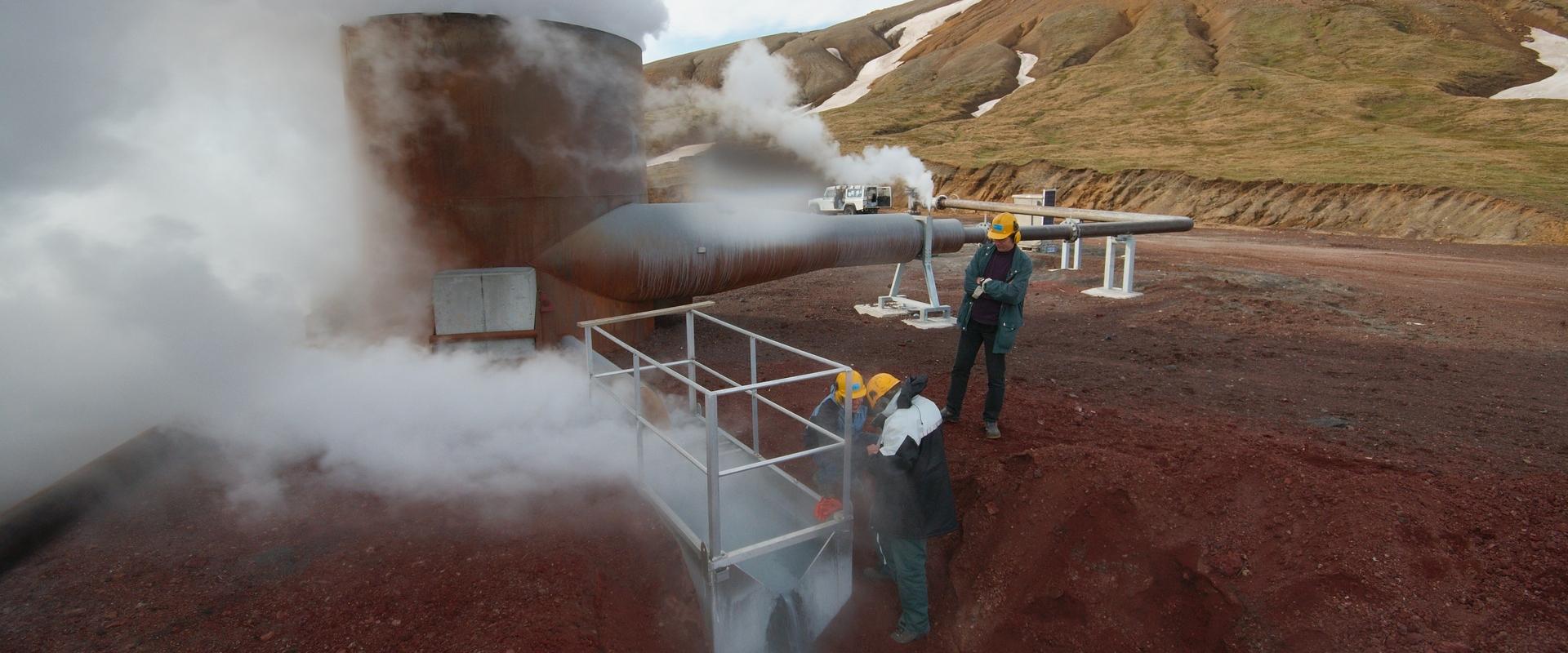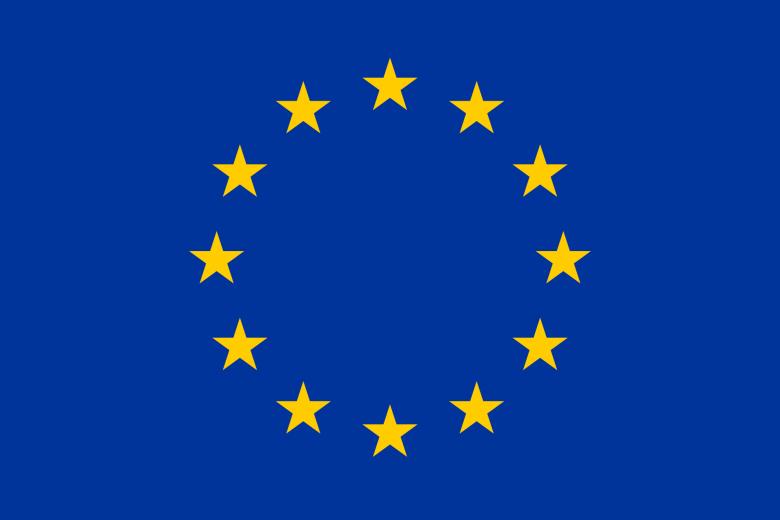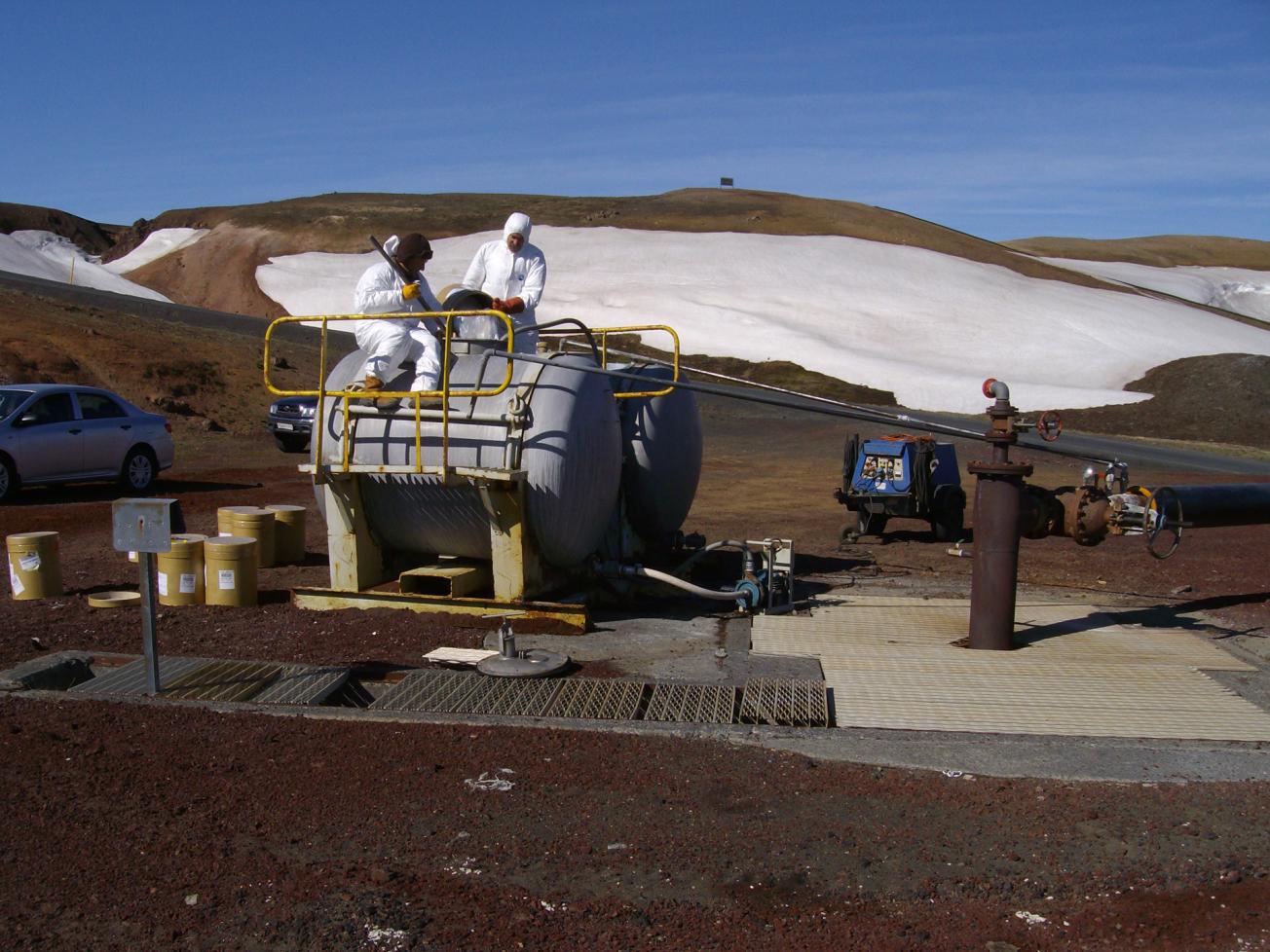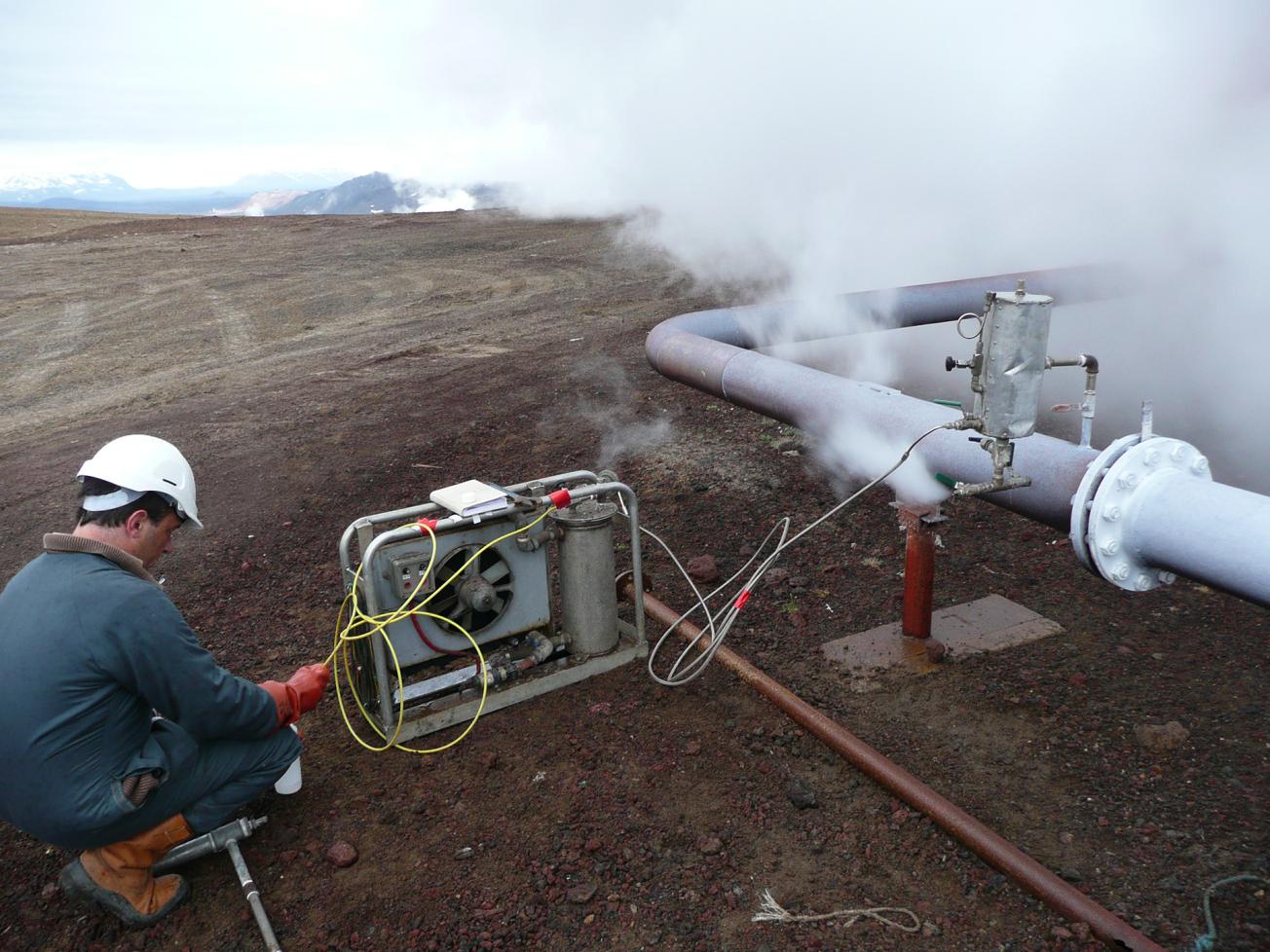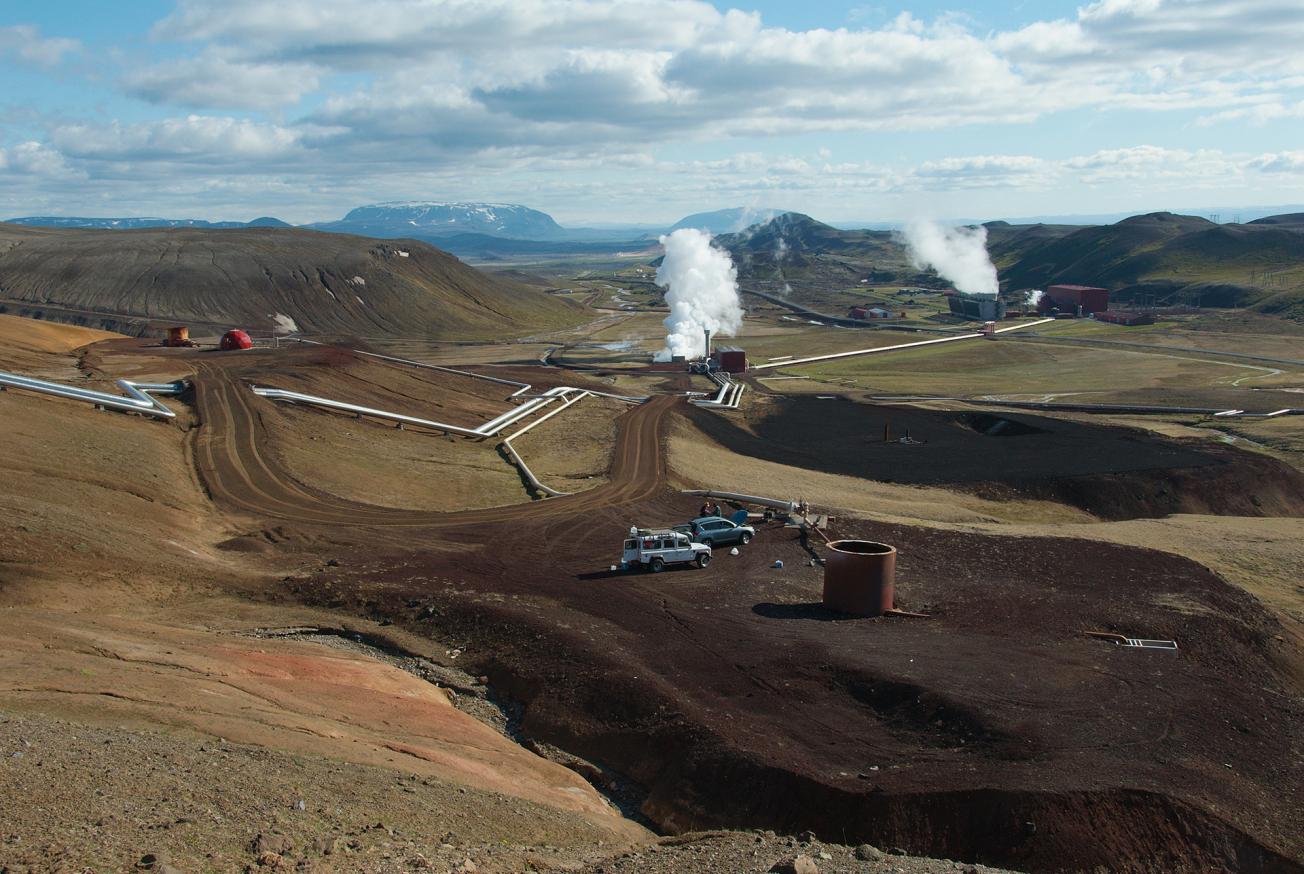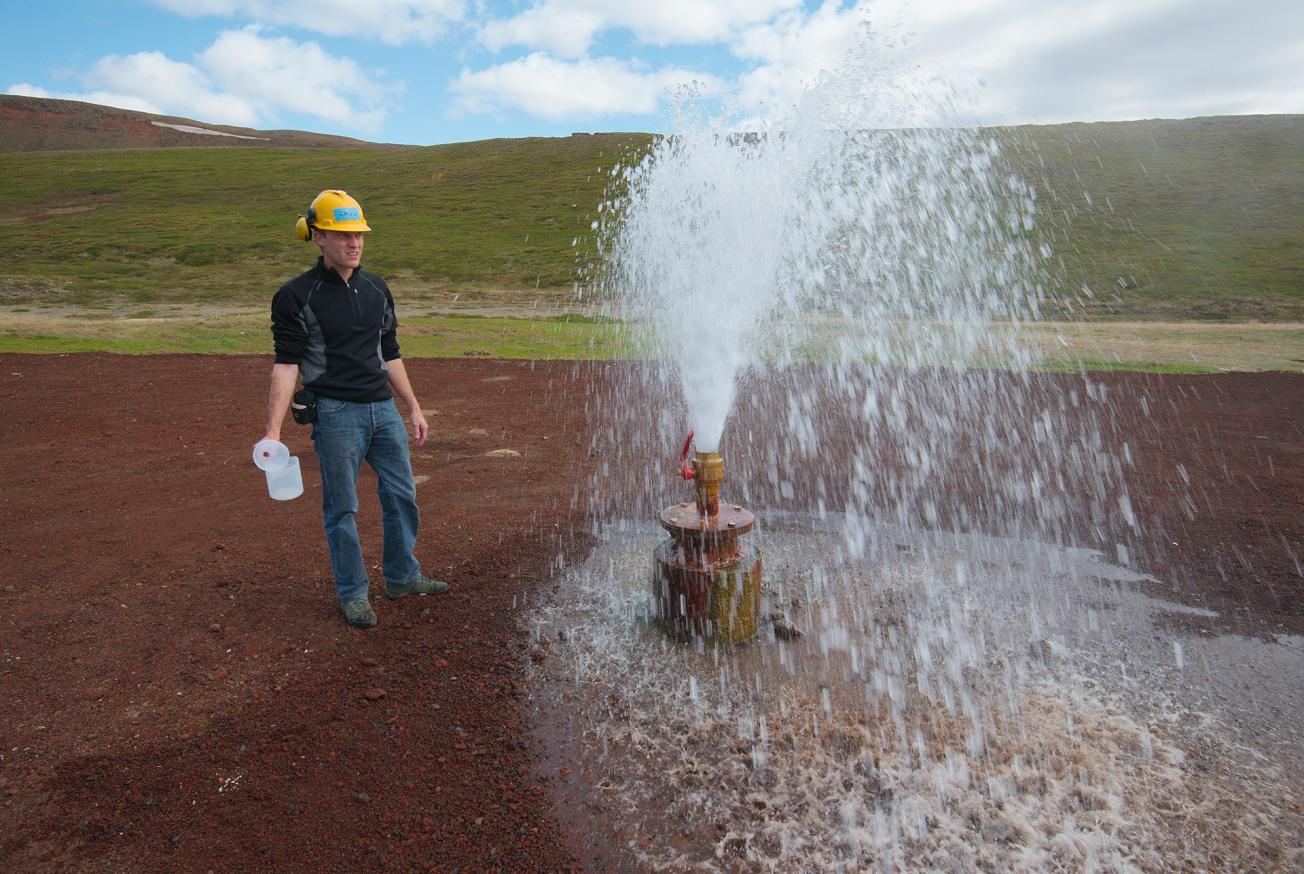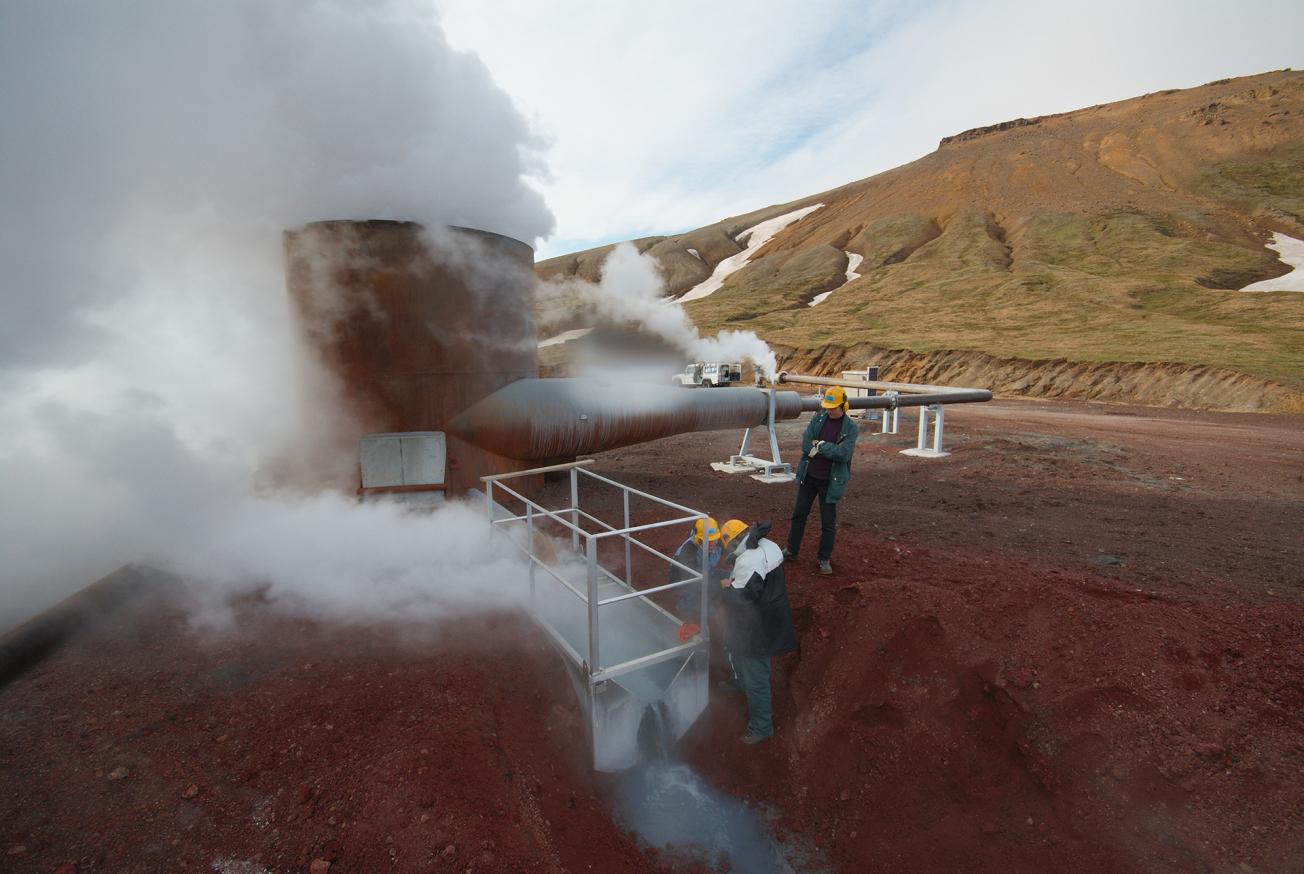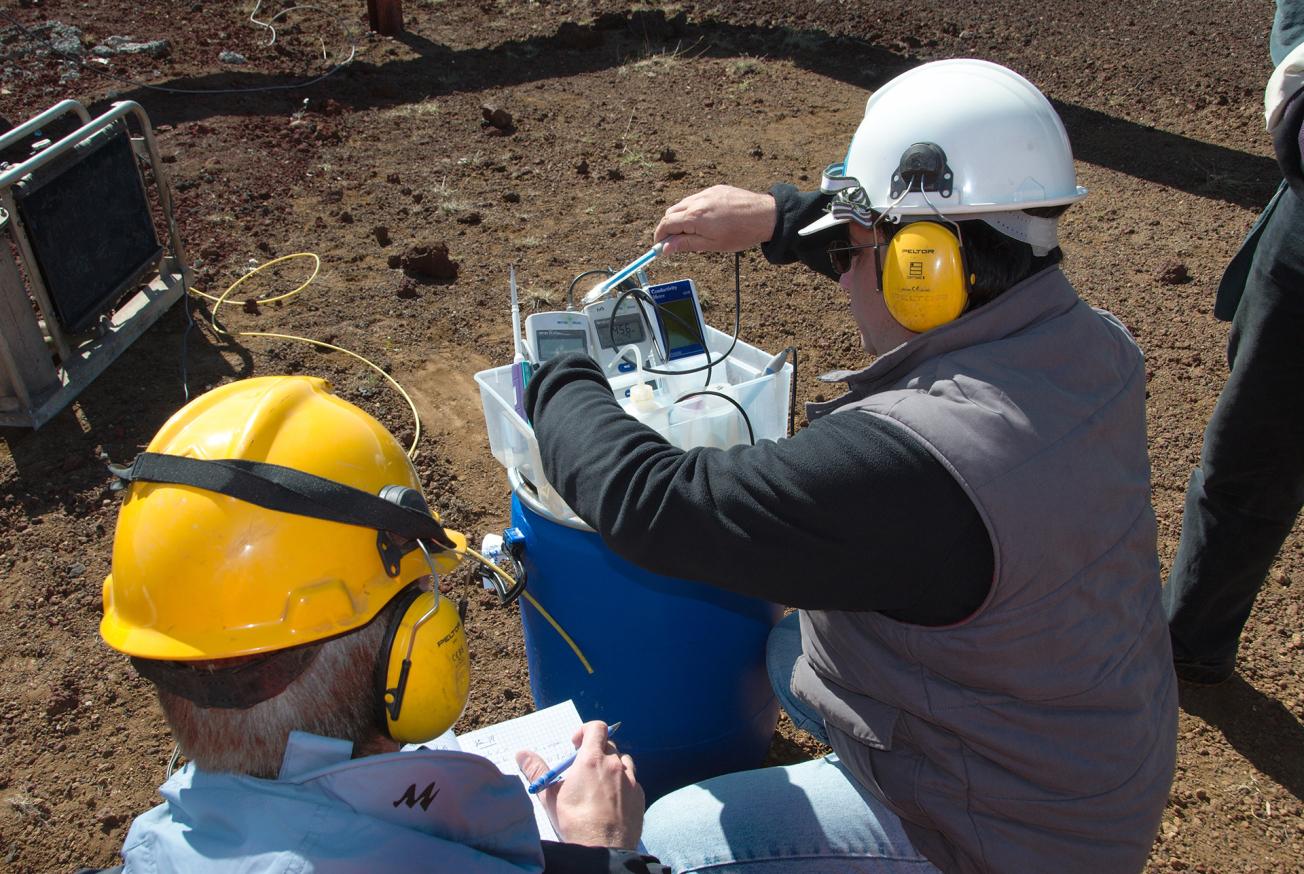An important and innovative project for developing supercritical heat extraction
The HITI project, (HIgh Temperature Instruments for supercritical geothermal reservoir characterization and exploitation), in which the BRGM took part, aimed to develop and validate tools and methods for physical and chemical borehole measurements under supercritical conditions (T ≥ 374°C, P ≥ 218 bar).
This 4-year project (2007-2010) was financed by the European Union under the 6th FPRD and is supporting the international Iceland Deep Drilling Project (IDDP).
The tools and methods have been tested, validated and applied for deep borehole measurements in the Krafla geothermal field. They may also be used in the Reykjanes boreholes.
Developing a unique range of tools
Several types of tools and methods capable of withstanding very high temperatures were developed during the HITI project. These include:
- A PLT400 multi-sensor for use at temperatures up to 400°C to measure the pressure, temperature, flow and conductivity of fluids in deep boreholes (Calidus Engineering Ltd.);
- a tool for measuring the electrical resistivity of deep rocks (Dual LateroLog, DLL) at temperatures up to 300°C (Calidus Engineering Ltd., CNRS Montpellier) ;
- measurements of the electrical resistivity of core samples and experiments in the laboratory (CNRS Montpellier);
- a gamma ray sensor to produce deep borehole measurement profiles at temperatures up to 300°C (ALT);
- a prototype acoustic televiewer used in producing produce deep borehole profiles at temperatures up to 300°C (ALT) (ALT);
- optical fibre for high-temperature measurements in deep boreholes (GFZ).
BRGM's part in the project
BRGM was responsible for:
- developing, testing and validating a cabled temperature sensor operating at up to 320°C;
- developing, testing and validating high-temperature chemical geothermometry (300-500°C) from the Na/Li couple (fig. 4) and lithium isotopes;
- chemical tracer tests using stable organic compounds up to temperatures of 350°C (naphthalene disulfonates) to show hydraulic connections between boreholes, help understand the circulation of deep fluids and estimate circulation speed and reservoir capacity.
BRGM was also the coordinator for the “Prospects to 500°C” task aiming to apply a prospecting strategy and new concepts to develop new, reliable and efficient measuring tools (sensors for temperature and pressure, gamma rays, acoustic signals, conductivity and pH, sample collectors, etc.) withstanding very high temperatures (up to 500°C).
The tools developed during the project were also promoted among potential users and markets were identified.
HITI project on supercritical geothermal reservoirs
HITI partners and players
- ISOR (Iceland) - project coordinator, CNRS Montpellier (France), BRGM (France), Calidus Engineering Ltd. and Oxford Applied Technology Ltd. (Oxatec) (United Kingdom), ALT (Luxembourg), GFZ-Potsdam (Germany) and CRES (Greece).
- A BRGM-ADEME thesis was produced with the University of Montpellier geosciences laboratory (October 2007- December 2010) on “High-enthalpy hydro-geothermal reservoirs: making use of the petrophysical properties of basalt” (Réservoirs hydro-géothermaux haute enthalpie : apport des propriétés pétro-physiques des basaltes". Author: M. Violay. Thesis supervisor: Ph. Pézard (Univ. of Montpellier). Co-supervisor: B. Sanjuan (BRGM).
Prospects
The tools and methods developed and tested during the project are proving essential in estimating the geothermal potential of a very high temperature geothermal field, but also to monitor the field during extraction.
In collaboration with ISOR for the necessary logging winch and cable, these tools and methods could prove very useful if geothermal resources at temperatures near or above 300°C were to be discovered and exploited at Bouillante, en Guadeloupe, or in other Caribbean islands.
These tools have enabled BRGM to consolidate its international position in the field of high to very high temperature geothermal applications.

